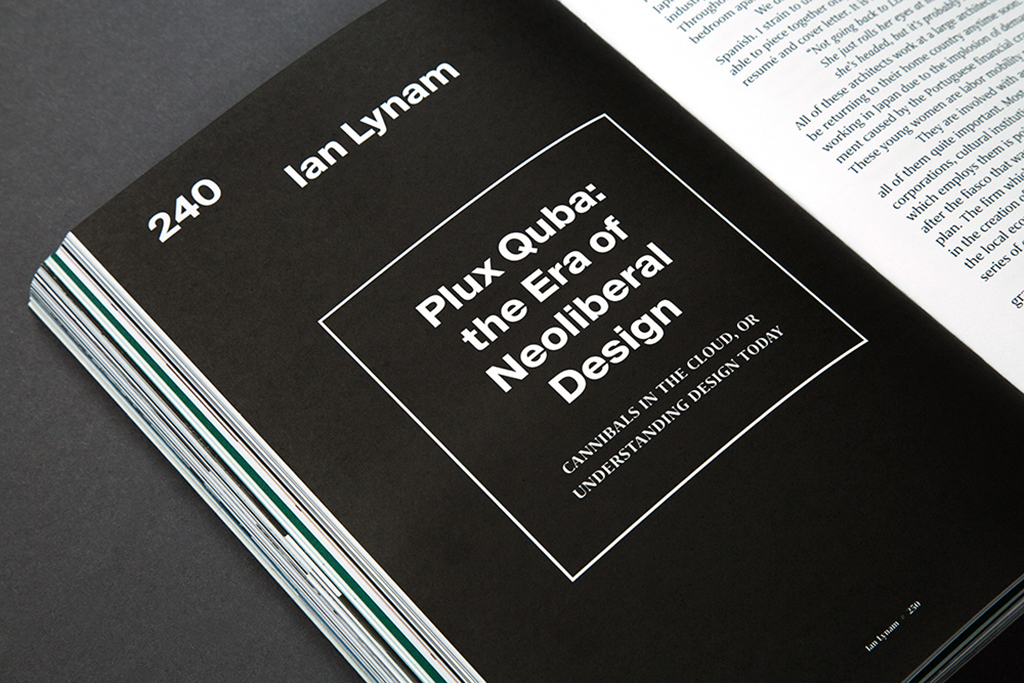VCFA’s Ian Lynam has a new essay in Slanted #27, the Portugal issue. The essay is called “Plux Qubaa: the Era of Neoliberal Design”. The essay is an examination of global labor structures through the lens of a dinner party.
An excerpt:
This is where we are: in a new era. I am giving it a name and staking the claim that we have entered into a new era of design history: the Era of Neoliberal Design. What Keedy calls “The Global Style” is just the skin, the ‘landlord paint’ of a world unloosed from obvious structures—both visual and economic. Design, particularly graphic design, looks the way it does now because the grab-bag of history is the ’52 pickup’ of technocratic plutocracy. Understanding graphic design today through the lens of political economy gives context and semantic space for subservient theories of post-postmodernism and metamodernism. Efficiency and flexibility in the market opens up a porousness that we can use to understand our desire to oscillate between the past and the present and the future.

This is the reality we have dwelled in since the death of grunge (a.k.a. postmodernism with the intellectualism neutered). A landscape of sans serif typefaces used in a centered axis composition overprinted with tetrahedral, futuristic ornament and browser-like images with varied dimensions and aspect ratios—and why so much design looks like the Internet printed out… and why so much design looks like different eras of the internet printed out. Locale and class bely the ‘appropriate’ aesthetic.
We cannot further deny an understanding of the synthesis of these varied aesthetics and their reason for being. We live in an age where a technology corporation has more cash than the leading economy of the world. With the opening of Cuba and the continued ascendance of Apple, an important concept has come home to roost (again)—late market capitalism is the only way forward in terms of global economies, a la Francis Fukuyama’s The End of Humanity. In a world bereft of options other than the rush to the bottom of market goods and services provided, we are forced to efficiency—it makes sense that the Internet of Things and the Design of Things look so similar. This sameness—it is the function of a market economy. It is the evidence of the pervasiveness of results/evidence-based policy, practice, design, and education.
You can pick up a copy of Slanted #27 here.Authentic Nike Sneakers | Nike Releases, Launch Links & Raffles


